The 2012 MacBook Air (11 & 13-inch) Review
by Anand Lal Shimpi on July 16, 2012 12:53 PM EST- Posted in
- Apple
- Mac
- MacBook Air
- Laptops
- Notebooks
Keyboard and Trackpad
The keyboard on the 2012 MacBook Air is the same as the 2011 model. You get a full sized keyboard on both the 11 and 13-inch models, with the alphanumeric keys measuring ~15 x 15mm. The function keys are half height on the 13 and even smaller on the 11, but there's no sacrifice in key size otherwise. Key travel and physical feedback are both as good as they can get on a chiclet-style keyboard. As Apple has now fully transitioned to this style of keyboard across all of its Macs, I can't really say I have any complaints about it. Apple's keyboard remains one of the best on the market.
The dedicated power button from the older Macs is gone and replaced with a power key that looks like another function key. The power key is functionally no different than the old power button - tap to turn on, hold to power down in the event of a hard lock.
The 2012 keyboard is nicely backlit, just like on every MacBook Air but the 2010. Apple offers fine grained controls over the keyboard backlight (16 adjustable levels). You can either choose to control it on your own or let the ambient light sensor control the intensity of the keyboard's backlight.
We spend so much time pointing out poor clickpads in the latest Ultrabooks that it's important to mention just how good the clickpad is in the MacBook Air. Apple continues to use the top hinged design on its glass covered clickpad. Clicks are easier towards the bottom of the pad than at the top where the hinge is. The clickpad is glass covered which makes it very smooth and comfortable to use. Finger rejection is handled extremely well under OS X, accidental clicks are very rare. I typically keep my thumb on the clickpad, near where the right mouse button would traditionally be, and mouse around with my index finger. While I normally have issues with this usage model on most of the clickpads I use, Apple's implementation is both the exception and the benchmark. It just works.
USB 3.0 Performance
USB 3.0 is alive and well on the new MacBook Air. Both ports support the standard and both OS X and the hardware supports the USB Attached SCSI Protocol (UASP). I have noticed that USB device compatibility is more finicky on the MacBook Air compared to the rMBP. Most devices seem to work fine but Kingston's HyperX Max 3.0 for example wouldn't work, although it worked fine on the rMBP. The hardware is actually detected by OS X, the drive simply never appears to Disk Utility or in Finder. A few folks have noticed something similar with other drives on Apple's support forums but the issue doesn't seem to have widespread implications.
USB 3.0 performance however is just as good as on the rMBP. I still need to grab a UASP enabled USB 3.0 device with 6Gbps SATA support to really stress the interface, but using Seagate's GoFlex USB 3.0 drive and a Kingston HyperX SSD in place of the mechanical drive I'm able to hit around 260MB/s:

Thunderbolt support comes courtesy of a 4-channel Cactus Ridge controller. The Thunderbolt port continues to be on the opposite side of the machine from the power connector. Anyone who owns a Cinema or Thunderbolt Display will bemoan the continued use of this configuration.
FaceTime HD Camera
Last year Apple introduced a 720p FaceTime HD camera to its MacBook Pro. The 2012 MBA inherits the same camera. Image quality remains acceptable as long as you're in a room with not terrible lighting.
Most of the Ultrabooks I play with these days try to mimic the FaceTime HD experience by using a 720p sensor. Arguably just as important as the sensor is the software that goes along with it. Photo Booth and Apple's FaceTime app are both extremely simple and quick to launch. I can't stress the importance of getting little details like this right when selling to general consumers.
SD Card Performance
The SD card reader on the 13-inch MacBook Pro had no compatibility issues with Patriot's EP Pro UHS-I SD card. Max performance of the reader appears to be capped at 40MB/s however:
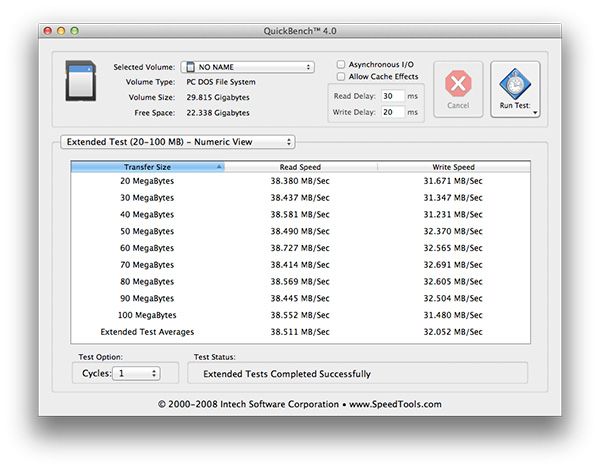
The rMBP by comparison can deliver more than 80MB/s in the read portion of this test. Even writes are faster at ~40MB/s on the rMBP compared to around 32MB/s here. It's a lot of these little things that contribute to the differences between Apple's MacBook Air and Pro lines.
WiFi Performance
Wireless connectivity remains unchanged from last year's model. Broadcom is on 802.11n WiFi duty with its BCM4322. Both 2.4GHz and 5GHz bands are supported. The same 2x2:2 configuration (2 send and receive antennas with 2 spatial streams) remains from last year as well.

I ran the 13-inch MacBook Air through the same three location WiFi test that I put the rMBP and 2011 MBP through, on both 5GHz and 2.4GHz. Performance on 2.4GHz was unusually low on the Netgear WNDR4500 I usually test with (10 - 20Mbps regardless of location) so I had to switch to the previous generation Apple Time Capsule to ensure there was nothing wrong with the notebook itself. All of the 2.4GHz MBA numbers have a star next to them to indicate that they aren't totally comparable as they're using a different AP. The 5GHz numbers all came from the Netgear however.
| Location 1 | Location 2 | Location 3 | |
| 2011 MacBook Pro (2.4GHz) | 124.0 Mbps | 12.6 Mbps | 61.6 Mbps |
| Retina MacBook Pro (2.4GHz) | 117.9 Mbps | 87.6 Mbps | 44.0 Mbps |
| 2012 MacBook Air (2.4GHz) | 95.7 Mbps* | 75.2 Mbps* | 31.2 Mbps* |
| 2011 MacBook Pro (5GHz) | 186.8 Mbps | 154.6 Mbps | 24.7 Mbps |
| Retina MacBook Pro (5GHz) | 227.7 Mbps | 156.8 Mbps | 33.7 Mbps |
| 2012 MacBook Air (5GHz) | 159.4 Mbps | 97.0 Mbps | - |
Overall WiFi performance is decent but obviously not as good as what you get from a MacBook Pro. Looking back at the results I almost wonder if the 2011 MBP wasn't showing some of these weird 2.4GHz issues on the Netgear router as well.
In the best conditions on 5GHz you can hit around 160Mbps, but you pretty much have to be right next to a good AP for that to work. Across a large room or in an adjacent one just under 100Mbps is possible on 5GHz as well. Go further out and you'll have to switch over to 2.4GHz.
There are no wired network options by default, however Apple's Thunderbolt to Gigabit Ethernet adapter works just fine on the new Air as well as the rMBP.
MagSafe 2
MagSafe 2 makes an appearance on the new MacBook Air, although it's curiously absent from the non-retina MacBook Pro. Eventually I'd expect all Macs to use MagSafe 2. The current state of things is likely temporary fragmentation. Similar to the rMBP, the actual power adapters themselves haven't changed: 45W is all you need for both systems.
Ivy Bridge on Air
Apple keeps its CPU options pretty simple and straightforward. You get a choice of three different CPUs, all dual-core, all rated at a 17W TDP. The Core i5-3317U comes standard in the 11, the i5-3427U comes with the 13, and both systems can be upgraded to the Core i7-3667U.
The breakdown between the chips is below:
| Apple 2012 MacBook Air Comparison | |||||
| 1.7GHz dual-core | 1.8GHz dual-core | 2.0GHz dual-core | |||
| Standard On | 11-inch MBA | 13-inch MBA | Optional for Both | ||
| Intel Model | Core i5-3317U | Core i5-3427U | Core i7-3667U | ||
| Base Clock Speed | 1.7GHz | 1.8GHz | 2.0GHz | ||
| Max SC Turbo | 2.6GHz | 2.8GHz | 3.2GHz | ||
| Max DC Turbo | 2.4GHz | 2.6GHz | 3.0GHz | ||
| L3 Cache | 3MB | 3MB | 4MB | ||
| AES-NI | Yes | Yes | Yes | ||
| VT-x | Yes | Yes | Yes | ||
| VT-d | Yes | Yes | Yes | ||
| TDP | 17W | 17W | 17W | ||
| Processor Graphics | Intel HD 4000 | Intel HD 4000 | Intel HD 4000 | ||
| GPU Clock (Base/Max) | 350/1050MHz | 350/1150MHz | 350/1150MHz | ||
The Core i7 upgrade is likely worth it if this is going to be your primary system for an extended period of time, particularly if it's acting as a desktop replacement. As a mobile device the standard CPUs are quite fast. If you're an annual upgrader, save your money, but if you're going to hold onto the system for a while and do a lot of heavy work on it, the upgraded CPU is probably worth it.
There is a known bug with the upgraded CPU under Windows today. Turbo Boost is disabled under Windows on the 3667U, although it's fully functional under OS X. Apple is aware of the problem and I'd expect a fix at some point, but there's no indication of when.


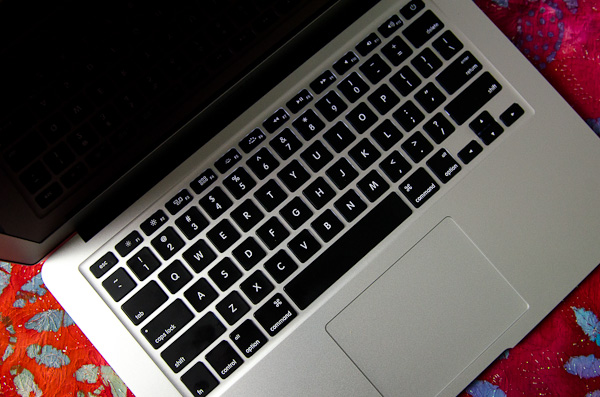
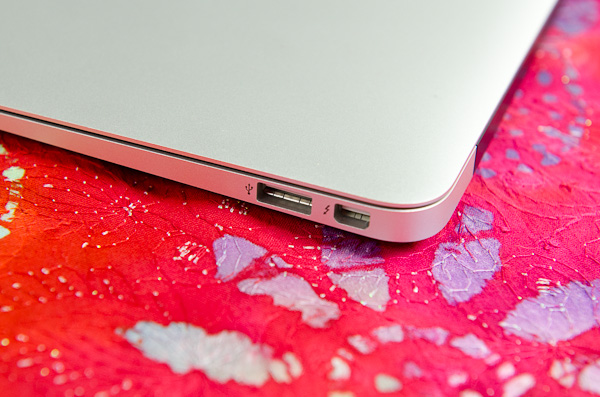

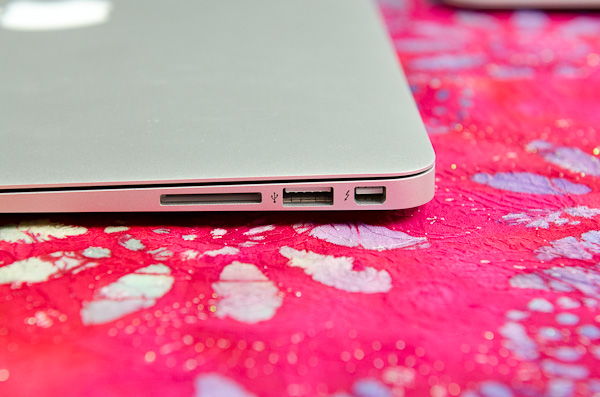
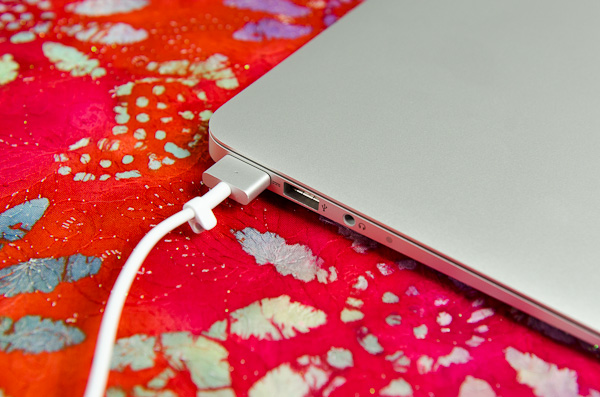








190 Comments
View All Comments
pmhparis - Wednesday, July 18, 2012 - link
What software is heavily crippled on Macs? Other than CAM/CAD which is very specialized, needs specific harware & is only used by a tiny minority, I cannot think of any.Either be specific or admit that you're full of FUD.
Tegeril - Monday, July 16, 2012 - link
I've seen a lot of discussion on the AT forums and elsewhere, trying to tangibly represent the changes in GPU performance over a number of generations of Mac laptops and desktops, but specifically what you really get out of Intel's new graphics versus the older Nvidia solutions.I'd love to see some kind of reporting on the relative performance of things like:
Intel 2000
Intel 3000
Intel 4000
Nvidia 9400m
Nvidia 320m
----
Nvidia 330m/gt/whatever it was
AMD 6630M
Basically to see how Intel's graphics stack up against the systems that many people are currently using and upon which they are contemplating an upgrade. Perhaps it will be best times for a Haswell comparison so you can throw in Intel 5000 or whatever they decide to call it. But I do think people would find it valuable when considering something like:
"I have this first gen Core i7 CPU MacBook Pro with a 330m/gt in it, if I don't want a retina MBP, my only graphics option without spending $1800 is Intel 4000, how does that stand up to what I'm using now" etc etc.
Anyway, great review as usual, if i weren't already an rMBP owner, I'd be gunning for a 13" MBA.
tipoo - Monday, July 16, 2012 - link
I agree, they should be added to Benchhttp://www.anandtech.com/bench/GPU12/372
Tegeril - Monday, July 16, 2012 - link
I can attest to frequent GPU issues, display corruption, other nonsense with my AMD equipped (6970M) iMac.I'd much rather they keep diversity between manufacturers in their product lines (even if it is generation to generation), but the drivers are kinda crap.
Death666Angel - Monday, July 16, 2012 - link
If I remember correctly, IGZO will be able to reduce the amount of backlight that is caught in the panel. So a higher resolution panel would not necessarily mean increasing the backlight to get the same brightness. :-)TEAMSWITCHER - Monday, July 16, 2012 - link
When I was in college my computer traveled back and forth with me in multiple large boxes. These new MacBook Airs (and the PC Ultra-books) are dream machines for college bound young people, vastly more powerful than the machines I used back in the day. As a Computer Science major having such a device constantly at my fingertips would have been truly life changing! So...Use them for good, and not evil.wditters - Monday, July 16, 2012 - link
Hi Anand, are you sure about the Samsung color profile that your put up for download? It seems awfully off and washed out ... Cheers.billgerr - Monday, July 16, 2012 - link
May get high-end 11-inch MBA as replacement when E4300 bites the dust. I like the E4300, but to this day have not owned a successor to Digital Equipment Co. (can't use term DEC anymore, as few recognize brand) Hi-Note Ultra. IMHO one of the sweetest designs ever, even with its blazingly fast 486DX CPU and floppy-disc wedge.Osamede - Monday, July 16, 2012 - link
This article claims:"....Ultraportables prior to the MacBook Air's arrival in 2008 typically sacrificed in one or more of the above areas......"
Wrong, wrong, wrong. There was the Panasonic Y series Toughbook, as well as the Soy SZ and Z. All of which far outperformed the MacBook Air. I had the Y5 with 14" screen 1400x1050 resolution, 8 hours useful life and it was 3.5 lbs WITH a DVD drive. The Sony Z11 and 12 for example pack power that even the most recent Macbook Air released NOW in 2012 still cannot match - and they also had 13" 1920x1080 screen and a "low end" model with 13" 1600x900 screen.
The way Apple fans are trying to re-write history is scary.
KPOM - Monday, July 16, 2012 - link
What part of "typically" you understand? That doesn't mean that there weren't ANY notebooks, just that they weren't typical of the class.Here is the full context:
Despite the recent Ultrabook frenzy, the MacBook Air was one of the first (if not the first) to marry performance with usability, screen size/resolution, portability and battery life. Ultraportables prior to the MacBook Air's arrival in 2008 typically sacrificed in one or more of the above areas.
The Panasonic Toughbook was 1.9" thick. That fails the portability test:
http://www.cnet.com/4505-3121_7-32309222.html
The Vaio Z series fits the bill, but is significantly more expensive than the MacBook Air. Ultraportables have been around for years, but mostly they had small screens, were thick, had bad keyboards. Heck, even Apple had the Powerbook Duo in the early 1990s.
The Air in 2010 was the first successful attempt to make the ultraportable mainstream. In 2008, it did offer a full size screen and keyboard, and was extremely thin, though it was still pricey.
The way some anti-Apple people are trying to re-write history is scary.